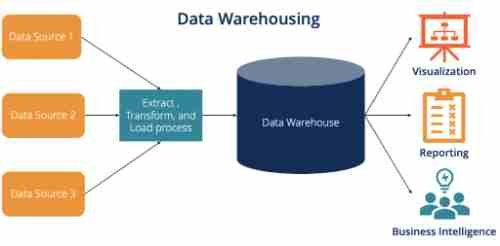Data warehouses are designed to handle queries and analyses and usually contain large quantities of historical details. The information contained in a data warehouse is typically taken from various sources, including the log files of applications and transaction software.
A data warehouse is a central location that manages vast amounts of data from various sources. Its analytics capabilities enable companies to gain valuable business insights from their data and improve the quality of their decisions. As time passes, it creates a historical record that could be extremely valuable for data scientists and business analysts.
What does data warehousing allow organizations to achieve ?

Explanation:
Data warehouses are the central repository of all the information produced by departments of an organization. A data warehouse collects massive data from a firm’s internal and external databases. It transforms the data into useful information, making it possible for business decisions to be taken based on the data.
What is the significance of a data warehouse?
Data warehousing is becoming a vital tool for business intelligence that allows organizations to:
Maintain consistency. Data warehouses are designed to apply a standard format for all the data they collect that makes it much easier for corporate decision-makers to analyze and share insights from data with colleagues across the world. Data standardized from multiple sources also decreases the chance of errors in interpretation and enhances general accuracy. Make more intelligent business decisions.
Influential business leaders create data-driven strategies and never make decisions without consulting the facts. Data warehouses improve the speed and effectiveness of accessing various data sets and allow executives at the top of the chain to draw information that will help them formulate marketing and business strategies that differentiate them from their competition.

Nice Post. Thanks!!!